The room where culinary creations come alive, where meals are shared, and memories are made deserves a space that reflects your style and needs. Having worn-out or outdated cabinets can make even the most delicious dish feel a little flat. So, when it comes to revamping your kitchen’s essential storage, you have two main options: refacing or replacing your cabinets.
Both options have their pros and cons, and the best choice will depend on your specific situation. This blog will break down the key factors to consider so you can make an informed decision before tackling your own kitchen makeover.
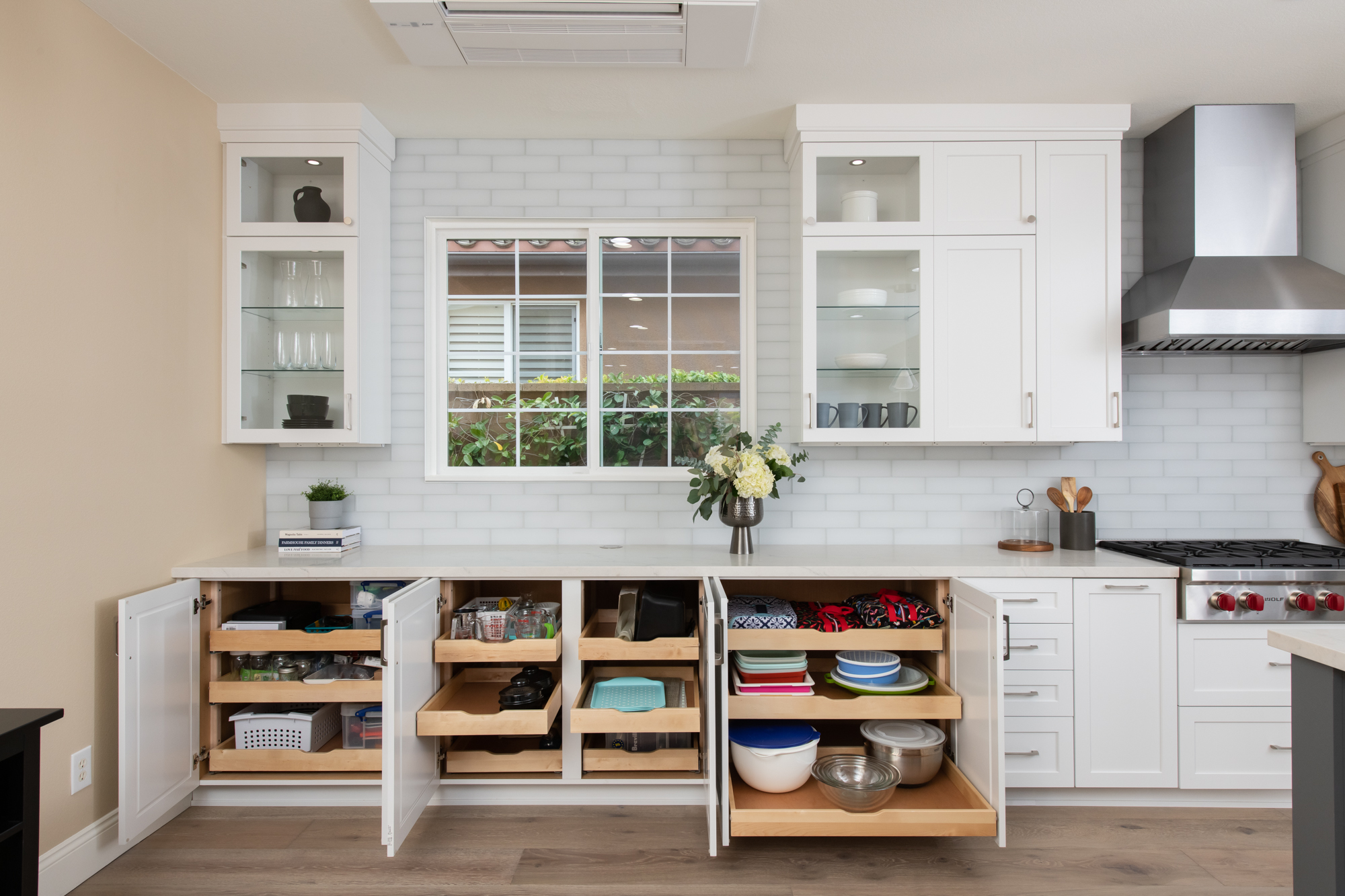 In a kitchen remodeling project, more than 40 – 60% of the time and money will be spent on cabinetry.
In a kitchen remodeling project, more than 40 – 60% of the time and money will be spent on cabinetry.
Refacing: The Budget-Friendly Makeover
Refacing is like giving your cabinets a makeover. The existing cabinet boxes stay put, but the doors, drawer fronts, and hardware get a complete overhaul. This is a budget-friendly choice, perfect if your current cabinets are structurally sound. You can also completely transform the look by choosing a different style of doors and drawer fronts, from sleek and modern to warm and traditional.
Benefits of Refacing:
- Cost-effective: Refacing typically costs around a third of the price of replacing cabinets.
- Quicker turnaround: Refacing can be completed in a shorter timeframe compared to a full replacement.
- Preserves valuable cabinet frames: If your existing cabinets are well-made and structurally sound, refacing allows you to keep their sturdy base.
However, refacing also has some limitations:
- Limited design changes: You’re mostly limited to updating the doors, drawer fronts, and hardware. The overall layout and functionality of the cabinets will remain the same. Paints, stains and door fronts also might not match.
- Underlying issues may persist: Refacing doesn’t address any structural problems with the cabinets themselves. If your cabinets are old, they wont be made any sturdier in a reface.
- May not be suitable for all cabinets: Cabinets made from particleboard or with extensive water damage might not be good candidates for refacing. You also don’t get new cabinets.
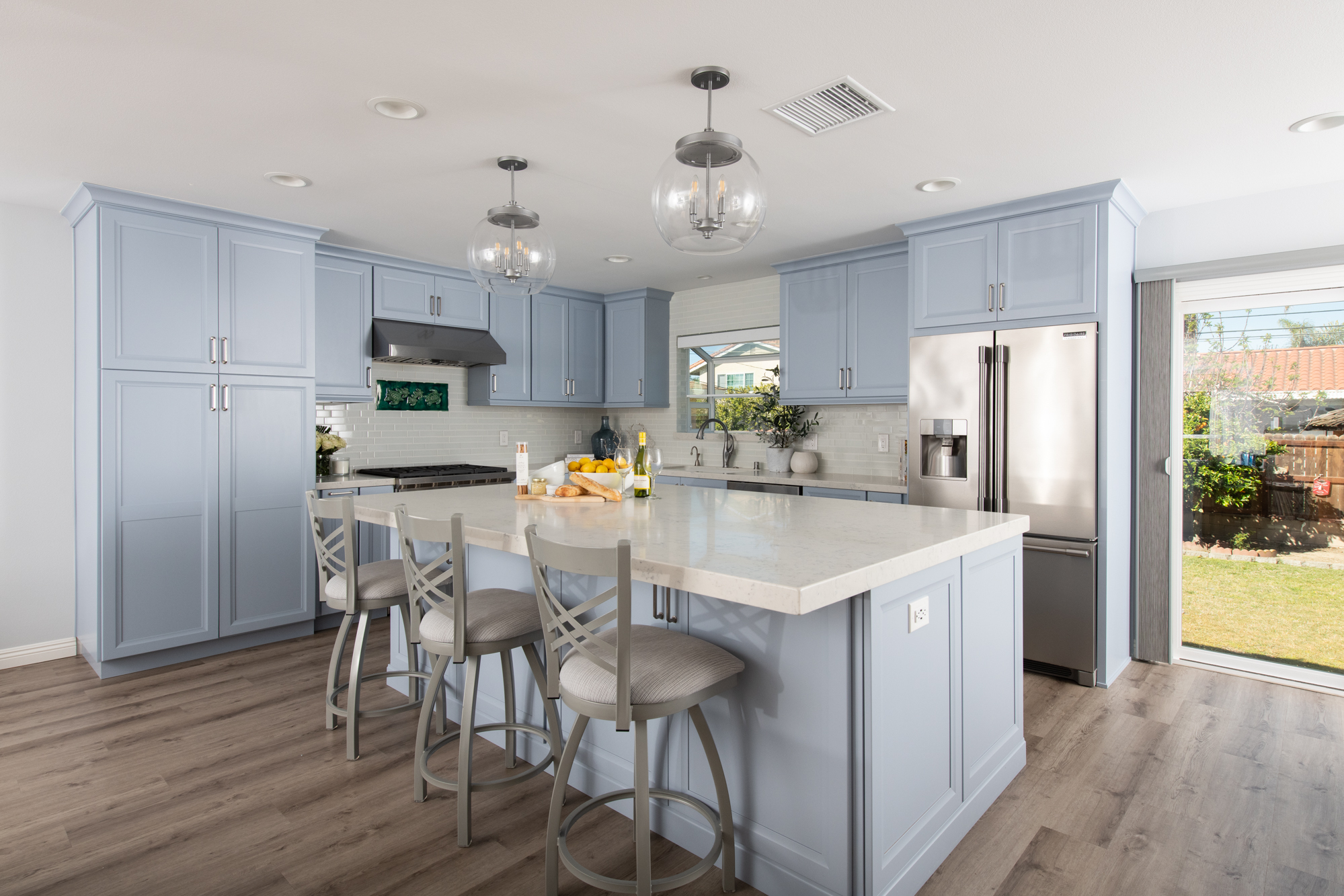 Cabinet refacing doesn’t always address hidden issues within your cabinets, such as water damage near the sink. You also cant change out that pesky drawer that doesn’t fit anything or has an odd angle.
Cabinet refacing doesn’t always address hidden issues within your cabinets, such as water damage near the sink. You also cant change out that pesky drawer that doesn’t fit anything or has an odd angle.
Replacing Cabinets: A Fresh Start
Do you envision a kitchen that not only looks stunning but functions flawlessly? Replacing your cabinets is the key to unlocking your dream space. This option gives you complete control, allowing you to maximize storage space with custom layouts and built-in features to incorporate the latest trends, like soft-close drawers and pull-out shelves.
Craving a built-in spice rack, a lazy Susan, or even a hidden coffee station? With new cabinetry, these features become possibilities. Plus, if your current cabinets are showing signs of wear and tear, water damage, or simply have an outdated style, replacing them ensures a structurally sound and stunning focal point for your kitchen. You can also choose from a wider range of materials and styles to match your vision, ultimately becoming an investment that grants you a space that’s both beautiful and efficient, making every meal prep a joy.
Replacing your cabinets offers a complete transformation, allowing you to:
- Completely revamp the look and layout: You have complete freedom to choose new cabinet styles, materials, and configurations to suit your taste, storage and cooking needs.
- Address structural issues: Replacing cabinets allows you to deal with any underlying problems with the cabinet frames or ensure better functionality with features like soft-close drawers and pull-out shelves.
- Boost your home’s value: New cabinets can significantly increase the resale value of your home.
Of course, replacing cabinets also comes with drawbacks:
- Higher cost: Replacing cabinets is a more expensive undertaking compared to refacing.
- Longer disruption: The installation process can take longer, leaving your kitchen out of commission for a while.
- Potential for unforeseen issues: Removing old cabinets might uncover hidden problems like damaged walls or plumbing issues, adding to the cost and timeline, however these are the kind of issues a reface will not address, so this can be a good thing in the long run.
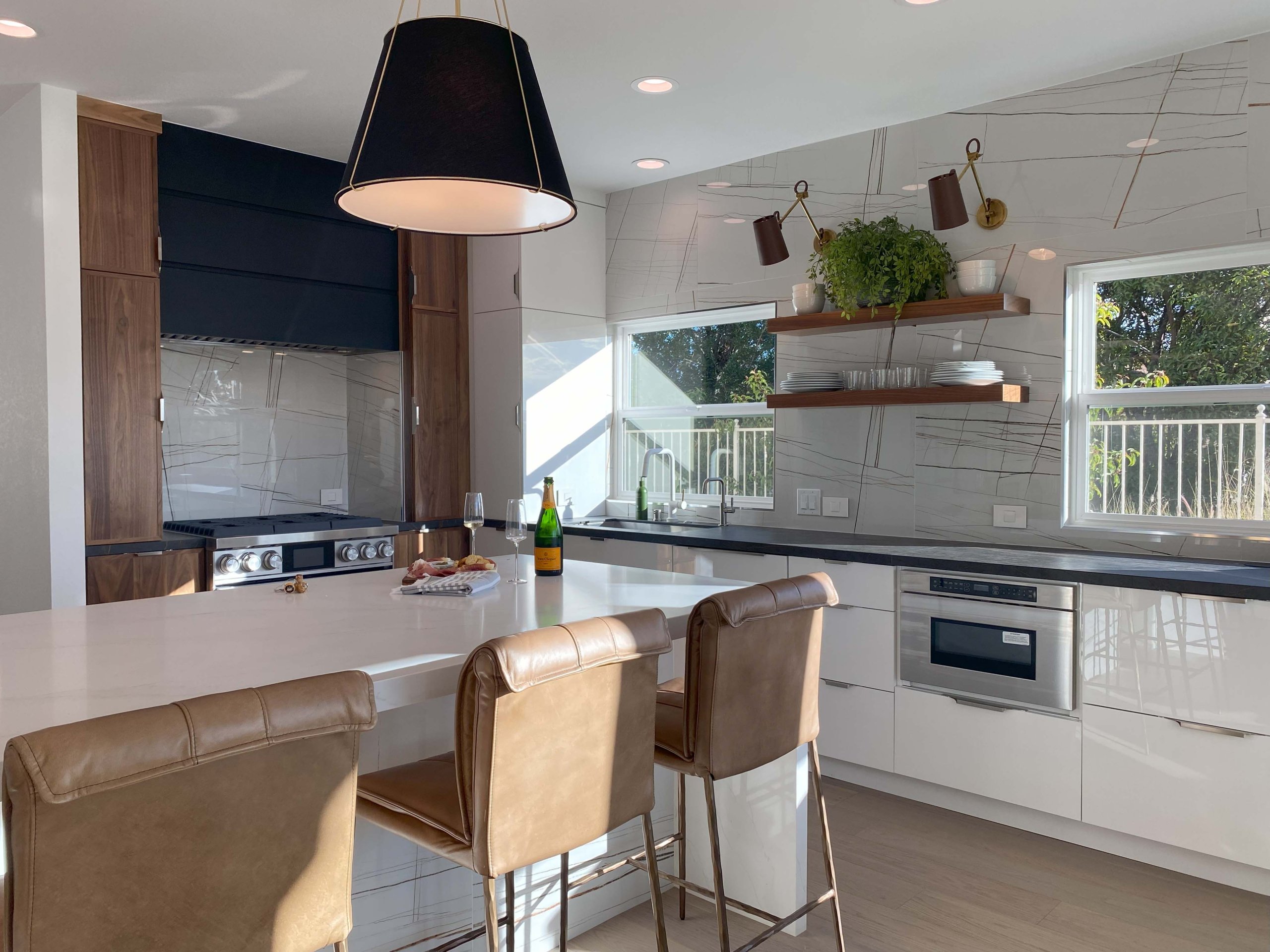 If your cabinets have significant damage, are poorly designed, or have structural issues, replacing them may be a better option.
If your cabinets have significant damage, are poorly designed, or have structural issues, replacing them may be a better option.
Countertops and Appliances
If you replace your cabinets, you’ll most likely want to replace countertops and/ or appliances at the same time for a cohesive and updated look. While it is possible to preserve your countertops during a cabinet reface, it is also possible that the countertops could be damaged in the process, which could lead to a higher cost. You will also need to keep in mind the size of your appliances, should you decide to replace them during your refresh. Appliances with the same dimensions will need to be factored in; so if you are big on cooking and want a larger range in your new kitchen design, replacing your cabinets would be a better option.
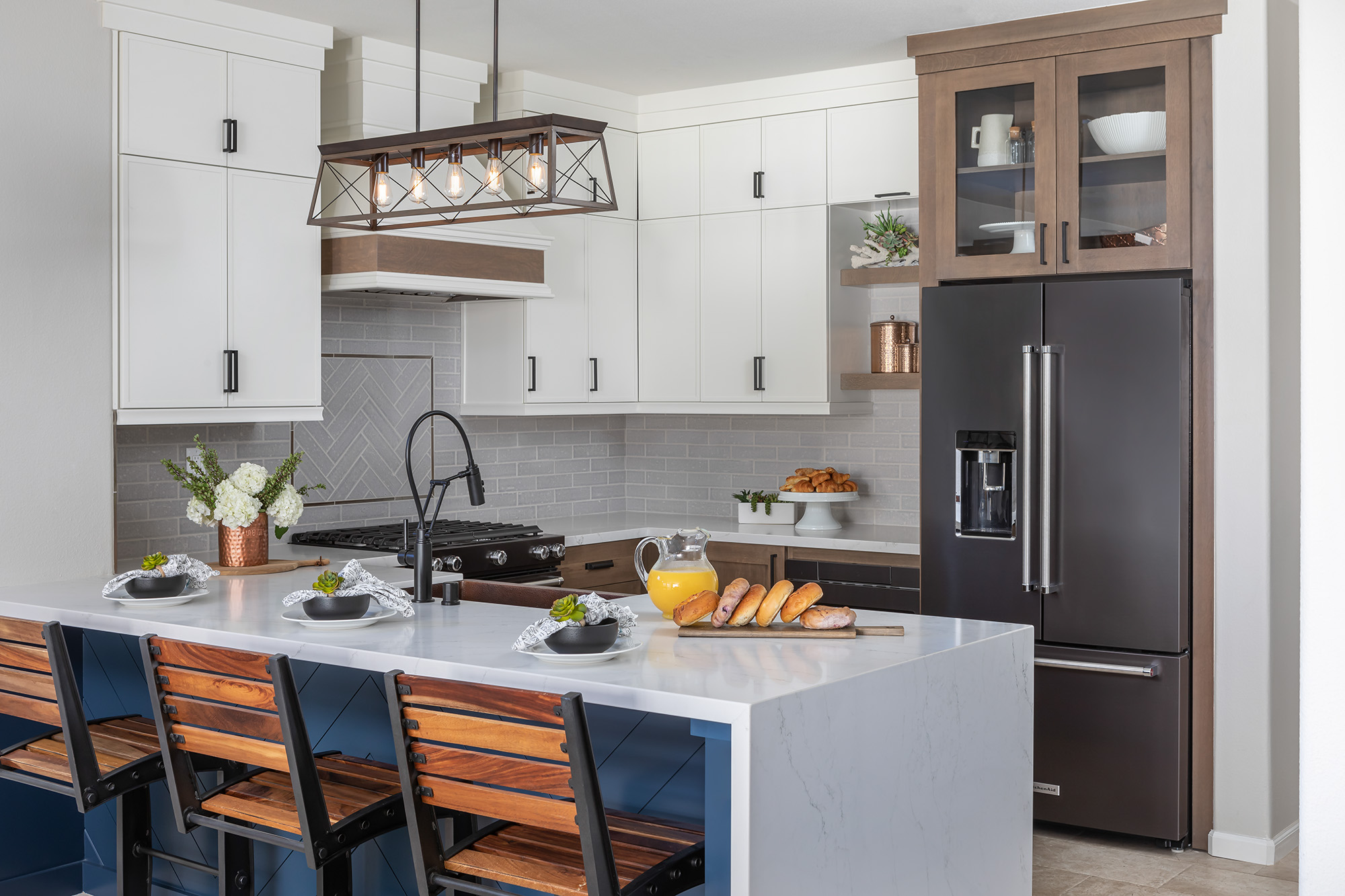
If your cabinets are more than 12 years old, it may be time for a replacement. If they are in poor condition – water damage, peeling paint, etc. – refacing may not be the best option for you.
Making the Right Choice
Here are some key questions to ask yourself when deciding between refacing and replacing your cabinets:
- Budget: How much are you willing to spend on the project? In some cases, cabinet refacing can be just as costly as cabinet replacement.
- Desired look and functionality: Do you want a completely new layout or just an aesthetic refresh? Are there storage or functionality improvements you crave? Are you considering a bump-out or larger/ smaller appliances?
- Condition of existing cabinets: Are your current cabinets structurally sound and free from water damage?
- Timeline: How long can you live with a disrupted kitchen?
Need a Second Opinion?
- Consulting a professional kitchen designer or contractor, such as Sea Pointe Design & Remodel, can help you weigh the pros and cons to make the best decision for your kitchen.
Faqs
What is kitchen cabinet refacing?
To reface kitchen cabinets, the cabinets must be in good shape as only the outer layer or skin of the cabinet is removed and replaced with a new one. Doors, drawer fronts and hardware are also replaced.
What is kitchen cabinet replacement?
With kitchen cabinet replacement, the old cabinets are removed and replaced with new ones. If you’re changing the layout and design of your kitchen or your original cabinets are in bad shape, replacing them is the best choice.
Is it less expensive to reface kitchen cabinets or replace them?
In most cases, refacing kitchen cabinets will be about 1/3rd of the cost of cabinet replacement. However, if your cabinets are underlaying or hidden issues, refacing them will only last as long as the structural integrity of the existing boxes.
Conclusion
Ultimately, the best choice depends on your budget, desired level of transformation, and the condition of your existing cabinets. Consulting a professional like a contractor or kitchen designer can help you assess your cabinets and advise you on the best course of action for your specific situation. Whether you choose to reface or replace your cabinets, the end result will be a refreshed and more enjoyable kitchen. By carefully considering your budget, desired outcome, and the condition of your existing cabinets, only you can make the best decision for your home.
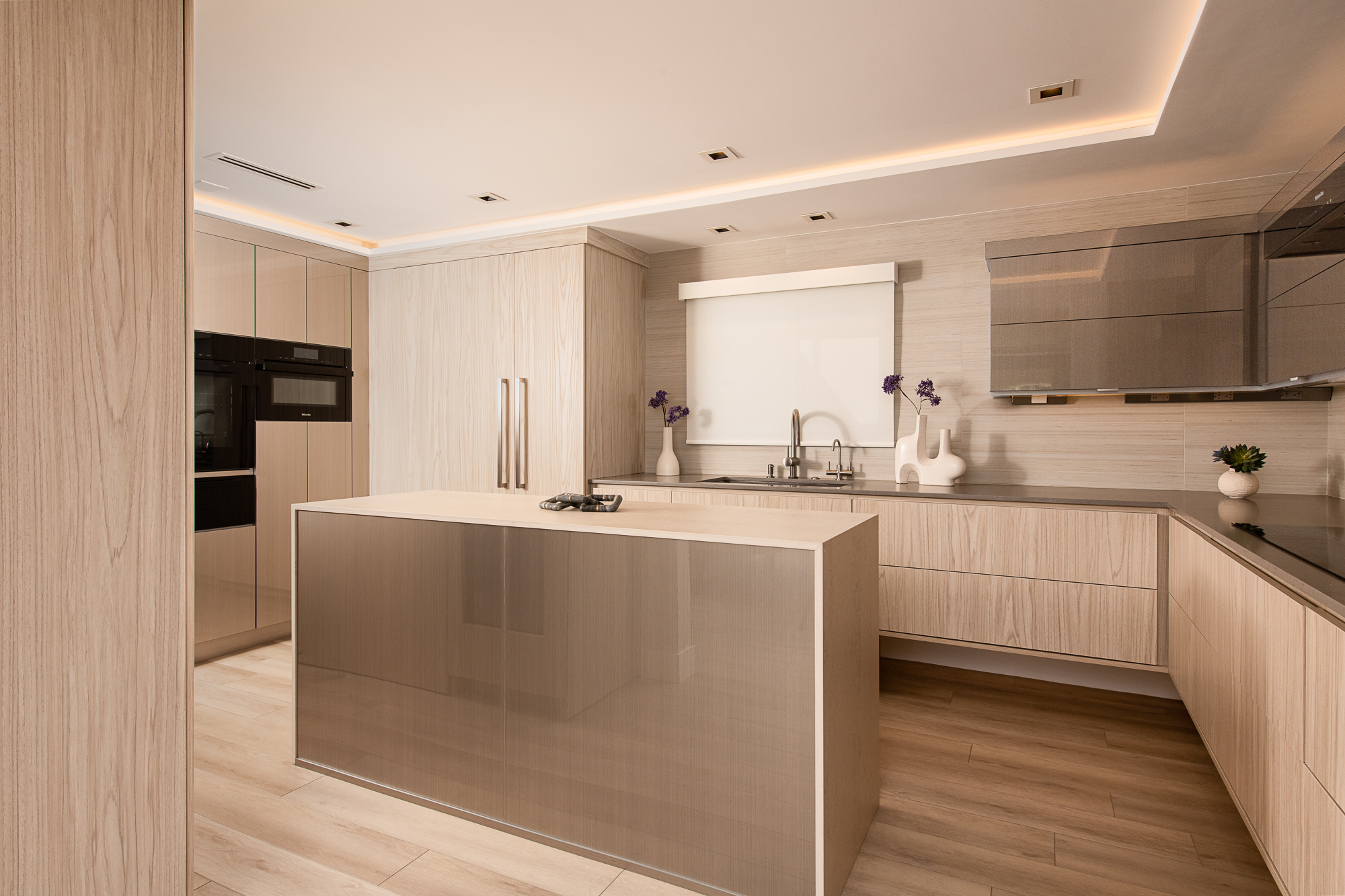
When you’re ready to start planning your own kitchen design, don’t search home remodeling near me, simply give us a call at (949) 861-3400 or fill out the form below to schedule your complimentary design consultation.